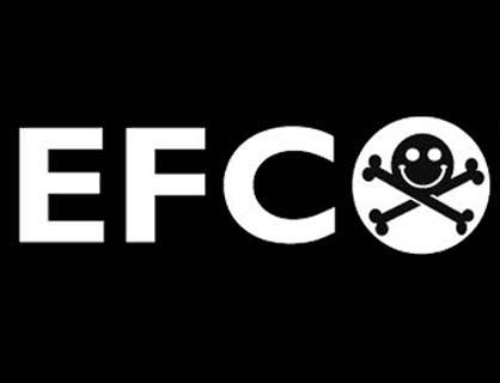Author: Emerzon Estrada
In 2019, Capital One—a major U.S. bank—suffered a massive data breach that exposed personal information of over 100 million customers. The cause wasn’t a zero-day exploit or nation-state attack. The breach stemmed from a misconfigured web application firewall (WAF) that allowed exploitation of a server-side request forgery (SSRF) vulnerability—an issue that should have been caught through routine governance checks.
The breach cost Capital One more than $190 million in fines and remediation, but the real damage was to customer trust and brand reputation.
What’s most troubling? This wasn’t a rare outlier. It was a textbook case of governance failure—and it could have been prevented.
The Capital One incident is a sobering reminder that up to 90% of cyber breaches stem from human error, misconfigurations, and process failures (see IBM’s Cost of Data Breach Report). These aren’t technology issues. They are governance issues.
Governance: The Overlooked Armor in Cybersecurity
Cybersecurity governance is more than compliance checklists and audit trails. It’s the system of accountability, leadership, and strategic alignment that ensures risk is proactively identified, managed, and mitigated.
Without strong governance:
-
Security controls may exist, but aren’t consistently enforced.
-
IT teams may flag risks, but no one is accountable to act.
-
Tools generate alerts, but no process ensures review or escalation.
-
Policies are written, but not communicated, trained, or measured.
In the case of Capital One, the misconfigured firewall was the technical issue. But the real failure was in the absence of governance processes that should have detected the risk during routine control assessments, change management, or third-party cloud audits.
What the Capital One Case Teaches Us About Governance
Capital One stored sensitive customer data in AWS. A former employee exploited a server-side request forgery (SSRF) vulnerability, accessed improperly secured files, and exfiltrated data—all without detection for months.
Here’s what good governance could have done:
-
Policy Enforcement: A clearly defined policy for firewall configuration and secure cloud deployment would have flagged misalignment before exposure.
-
Change Management: A mature change control process would have required peer review and validation of any infrastructure updates.
-
Third-Party Oversight: Strong governance over cloud vendor usage would mandate continuous security assessments and monitoring protocols.
-
Risk Ownership: If risk responsibilities had been clearly mapped, a specific team or individual would have been accountable for securing the cloud instance.
These are governance-driven processes—like policy enforcement and oversight—not technical controls like firewalls or intrusion detection systems. Yet each could have been the difference between a routine audit and a front-page crisis.
And to their credit, Capital One responded with significant governance and security enhancements post-breach. These included:
-
Clearer risk ownership and accountability across teams
-
Restructured cloud governance policies and configuration reviews
-
Board-level cybersecurity oversight and regular reporting
-
Stronger change control and automated cloud monitoring
-
Mandatory security training tied to performance goals
These actions illustrate that while governance failures created the gap, governance maturity is also what helped them rebuild trust.
Why 90% of Breaches Are Preventable—with Governance
It’s tempting to believe that more tools or better AI will save us from breaches. But the evidence is clear: most incidents don’t happen due to a lack of technology—they happen due to a lack of process, accountability, and visibility.
Governance is the key to closing this gap. It prevents:
-
Misconfigurations from going unreviewed
-
Risk assessments from becoming check-the-box exercises
-
Security from being siloed within IT instead of owned by the business
-
Employees from clicking phishing links due to poor training or unclear expectations
Governance creates an environment where security is everyone’s responsibility, not just the CISO’s.
Turning Governance into a Competitive Advantage
Capital One’s post-breach roadmap offers a real-world blueprint: when governance is prioritized, it aligns technology, leadership, and accountability. Their response included everything from cloud risk architecture reviews to board-level cyber oversight—showing how governance can turn crisis into a catalyst for maturity. Effective governance means:
-
Cyber risks are discussed at the board level and tied to strategic business goals
-
Policies are living documents that are enforced, reviewed, and updated regularly
-
Roles are clearly defined and reinforced with training and performance metrics
-
Security investments are prioritized based on actual risk, not just fear or compliance
In short, governance aligns people, processes, and technology with risk—and that’s the foundation of any resilient organization.
Actionable Steps to Strengthen Governance Today
To CISOs, GRC leaders, and business stakeholders: here are five steps to start turning governance into your strongest defense:
-
Create a Cyber Governance Committee with cross-functional leadership.
-
Review and Update Security Policies quarterly—not annually.
-
Map Risk Ownership so no key control is “everyone’s problem” (which usually means no one’s).
-
Audit Configurations and Change Management practices with a business lens, not just a technical one.
-
Embed Security Awareness and Accountability into onboarding, training, and executive KPIs.
Final Thoughts: Governance Is the Strategy That Outlasts the Threat
The next breach won’t happen because your firewall failed. It will happen because no one noticed it was misconfigured. It will happen because a policy wasn’t followed, a responsibility wasn’t clear, or a control wasn’t tested.
Technology will change. Threats will evolve. But governance is the strategy that endures. It’s what ensures that cybersecurity isn’t a reaction—it’s a readiness.
If Capital One teaches us anything, it’s this: governance failures may cause breaches—but governance improvements are what restore trust, drive resilience, and help organizations come back stronger.





